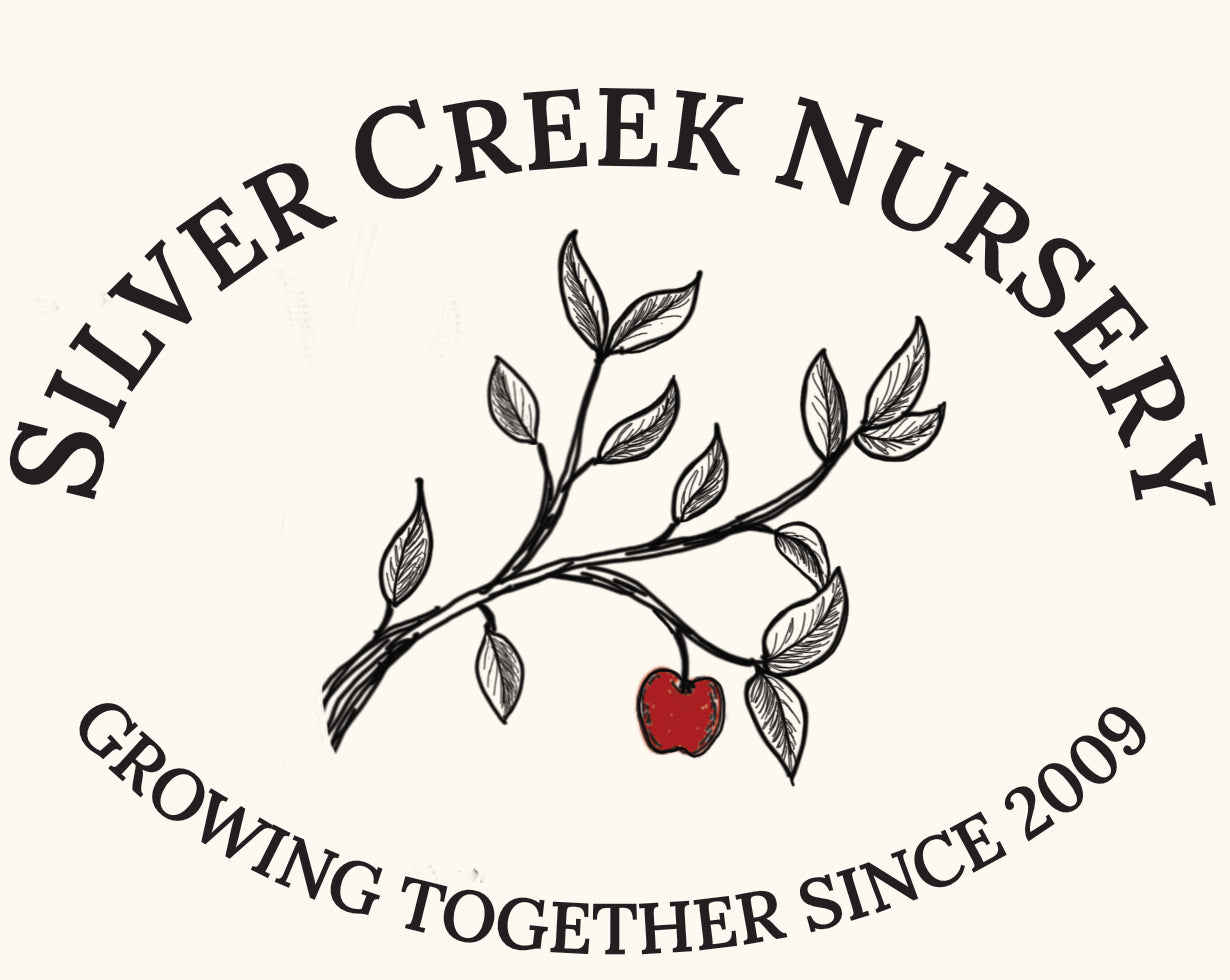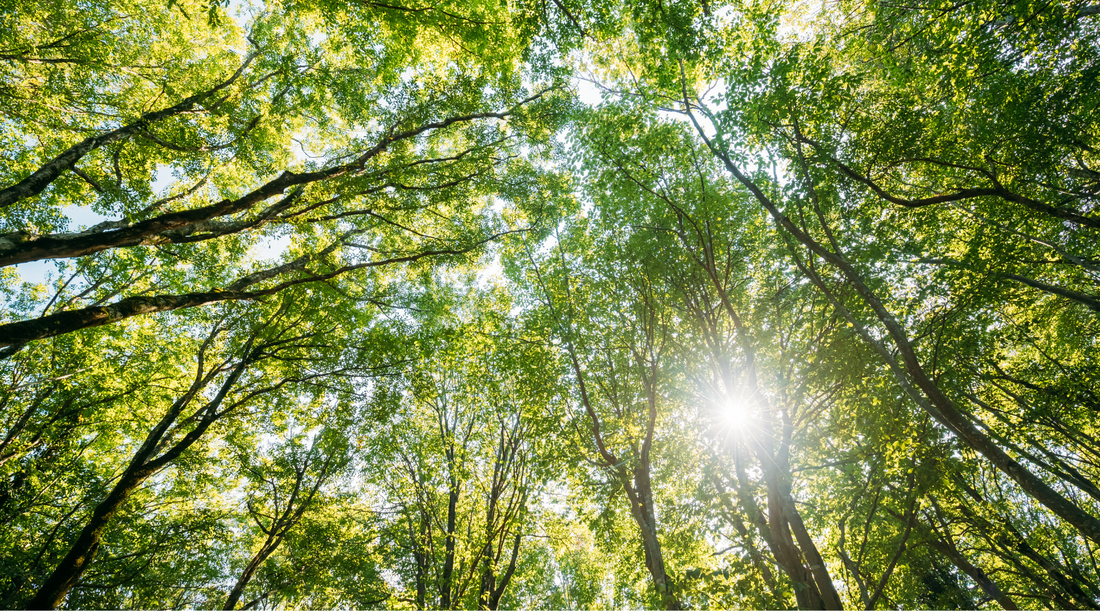Authored by Jodi Roth
While our Black Walnuts (and other trees in the Juglans plant genus) are great options for being tolerant of various soil types, pH and growing conditions, they are also equipped with the ability to produce a nontoxic chemical called hydrojuglone, which becomes toxic when exposed to air/soil. As hydrojuglone is oxidized, the toxin juglone is released, causing an allelopathic (negative) reaction in other plants that are nearby but not tolerant of the juglone.
In addition to Black Walnuts we also offer Butternuts and English Walnuts, all of which produce hydrojuglone to varying degrees. Hickories and Pecans (Carya genus) also produce hydrojuglone in smaller amounts, which are generally not found to affect surrounding plants – in fact, one source suggests pecan leaves as a good mulch due to the leaves being easily crushed and slow to decompose, although I would consider it likely still best to only use such a mulch on well-established older plants.
There are somewhat recent studies showing that healthy soil high in organic matter and mycorrhizal fungi can reduce the toxicity of juglone, suggesting that many more plants could grow successfully below Juglans in a healthy ecosystem. At some point, we will spend time digging into this further to check on newer research and update this blog post!
When a plant reacts to juglones, it may die very suddenly or very slowly begin to decline. Once a response is visible, it is often too late to save your plant. However, various factors can impact juglone toxicity: soil type, organic material, drainage, age of trees, root depth and general compatibility.
The amount of hydrojuglone released varies across different Juglans plants and soils have differing conditions when it comes to air space and water which affects levels of hydrojuglone oxidation. Overall, healthy soils with good levels of organic material, good drainage and thus healthier populations of beneficial microorganisms may have better ability to process juglones before they reach a non-tolerant plant – soil microorganisms love metabolizing juglone.
With regards to age of Juglans trees, it is known that there is no production of noticeable hydrojuglone until the age of 7-8 years. Trees tend to have roots that are 1.5 times the height of the tree above ground, and thus the majority of the toxicity happens from hydrojuglone oxidation in the soil around the tree. Once the tree is mature and producing nuts and husks along with dropping leaves, there is also a release of hydrojuglone above-ground. The general rule of thumb is to allow for a 30 meter (50 feet) buffer around a Juglans tree.
Who is most tolerant to juglone?
Plants we grow that are known to be tolerant of juglone include:
- Black Raspberry
- Catalpa
- Cherry, Peach and Plum Seedlings (grafted trees may not have compatibly juglone tolerant rootstocks)
- Currants
- Eastern Redbud
- Elderberry
- Hazelnut
- Honey Locust
- Jerusalem Artichoke
- Oaks
- Paw Paw
- Quince Seedlings (grafted trees may not have compatibly juglone tolerant rootstocks)
- Staghorn Sumac
- Sweetgum
Note that while these plants are tolerant of juglone, they do still need enough space to grow, and ensuring they are not shaded out by a large tree may still require more space than you might have to work with. Don’t forget to account for other growing needs of each plant you are considering in a “near-a-Black-Walnut” project. Below is an additional list of other plants, including garden crops, wildflowers, shrubs and ornamental perennials that are tolerant of juglones:
- Arborvitae
- Autumn Olive
- Beans (lima and snap)
- Bee Balm
- Beets
- Bellflower
- Bugleweed
- Burning bush
- Calendula
- Canadian Hemlock
- Clematis
- Coral bells
- Cranesbill geranium
- European Wild Ginger
- Evening primrose
- Forsythia
- Great Solomon’s Seal & Solomon’s Seal
- Hardy fall-planted bulbs; think allium, crocus, daffodils, hyacinth, and tulips
- Hawthorn
- Hollyhock
- Hostas
- Iris
- Jack-in-the-pulpit
- Japanese maple
- Lamb’s Ear
- Lilac
- Mayapple
- Morning Glory and sweet potato vines
- Most squashes and melons
- Onion
- Ostrich Fern
- Parsnip
- Periwinkle
- Phlox
- Rose of Sharon
- Sedum
- Spiderwort
- Johns Wort
- Sweet corn
- Sweet woodruff
- Trillium
- Viola
- Virginia creeper
- Wild Grape
- Wisteria
- Zinnia
Who is most susceptible to juglone?
The most susceptible plants we grow here at Silver Creek Nursery are asparagus and blueberries.
Other plants that are especially susceptible include White Birch, White Pine, Linden trees, Magnolia, peonies (most of them), tomatoes, eggplants, potatoes, and cabbage.
While creating this blog post I discovered that there are actually quite a few plants, including food and medicinal herb plants, that are tolerant of juglones! One could still create a small food space nearby and under the canopy of a Black Walnut tree. Hostas (Did you know they are edible? You can eat the stems as a fresh green in spring before they open and spread into leaves!) and Ostrich Ferns plus other shade-loving perennials could be used under the canopy, for starters.
My biggest takeaway is soil health – the soil microorganisms that can break down and neutralize the juglone toxin are your key to creating the environment for additional plants near your Juglans trees, so consider how you can build the soil environment (increasing organic matter) for your soil to become a thriving ecosystem of tiny juglone-eating life. And once you've added some juglone tolerant plants, they can help you build up the soil's organic matter layer over time.
I used the following sources (outside of our nursery resources) to create this blog post. In particular, the article from Penn State (3rd link) has the most extensive list of juglone tolerant plants I found while researching.
https://www.ontario.ca/page/walnut-toxicity
https://thegardenhoe.com/juglone-toxicity/
https://www.inournature.ca/juglone-tolerant-native-plants
Authored by Jodi Roth

